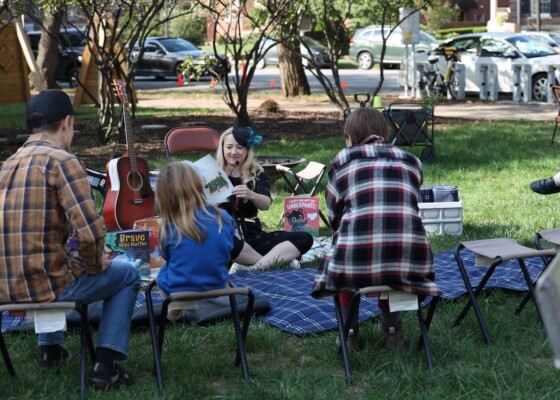Four Things We Learned on Our Field Trip to New Harmony
August 21, 2018On Saturday, August 18 we gathered in New Harmony for another of our Quantum Leap Field Trips. Though tiny, this Indiana town was once the center of the American scientific…
On Saturday, August 18 we gathered in New Harmony for another of our Quantum Leap Field Trips. Though tiny, this Indiana town was once the center of the American scientific community and thanks to our expert guides, we got glimpses of this remarkable story.
Here are a few things we’ll be thinking about in the days ahead:
- The significance of New Harmony’s contributions to the field of geology can’t be overstated. William McClure, father of American geology, co-founded the scientific settlement and we loved getting a peek at the many fossils and plants named in his honor. David Dale Owen, son of the other co-founder Robert, conducted the first geological surveys of the Hoosier state, identifying the Salem and oölitic limestones that would become famous building material, as well as sussing out the extent of Indiana’s coal deposits. We’re struck by the twin imperatives of 19th century geology: to advance knowledge and the economy.
- Technology can help us understand the past when it might otherwise be disrespectful or difficult to excavate. Mike showed us the variety of methods he’s used to understand Native American and Harmonite traces. We were reminded of a line from Indiana poet Jared Carter’s poem “After the Rain,” which reflects on “lost things still rising here.”
- New Harmony is home to the nation’s oldest continuously operating public library. Perhaps as bold as any other utopian vision, the Working Men’s Institute was founded by William McClure in 1838 to create a place where ordinary people could educate themselves and expand their knowledge of the world. The on-site museum is a cabinet of curiosities, featuring questionable taxidermy, fascinating fossils and one of best collections of freshwater mussel specimens anywhere on earth.
- Science, art and history converge to help us make sense of New Harmony. Many of the intrepid scholars, like Charles Alexandre Lesueur or Thomas Say, of “the boatload of knowledge” were skilled artists as well as expert scientists. The notebooks, guides, maps, journals and scholarly volumes they produced are beautiful works of art as well as important historical and scientific records.
A special thanks to Bill Elliott (geology) and Mike Strezewki (anthropology) of the University of Southern Indiana for helping us uncover New Harmony’s hidden treasures, and to our friends at Historic New Harmony for experimenting on this one-of-a-kind tour!


